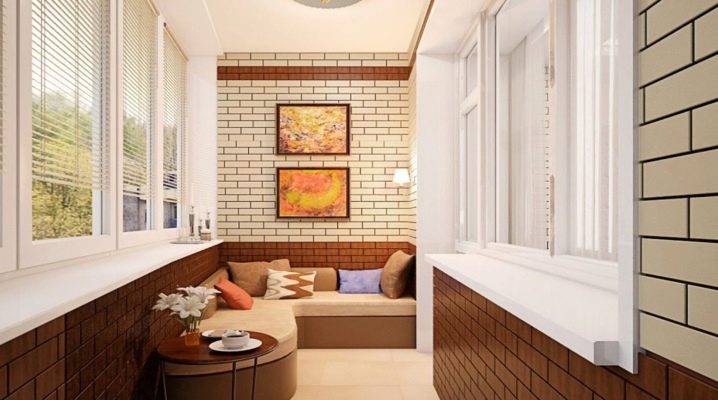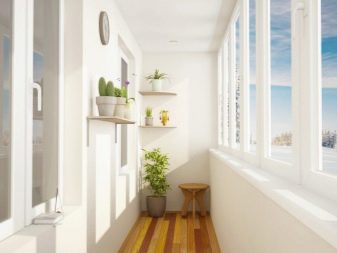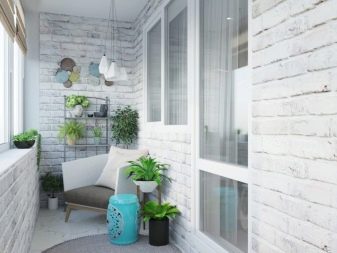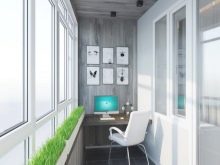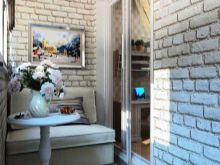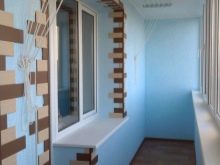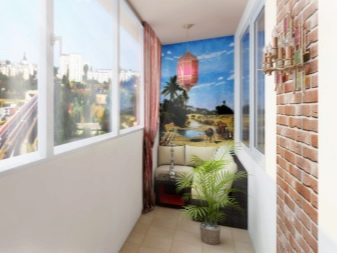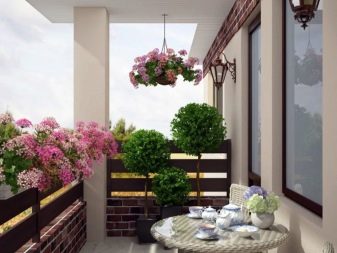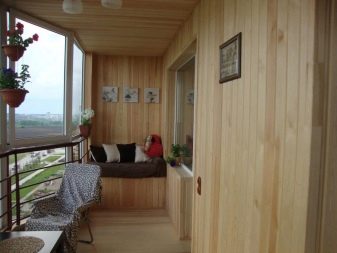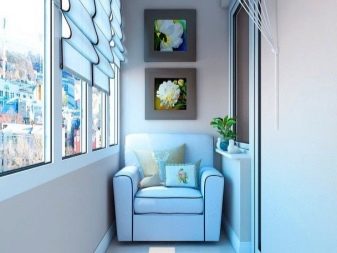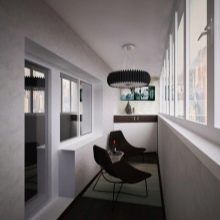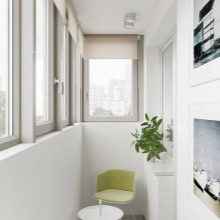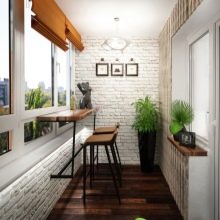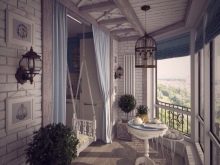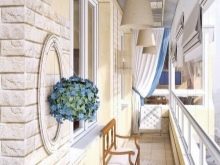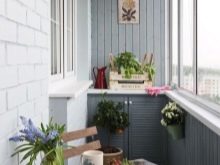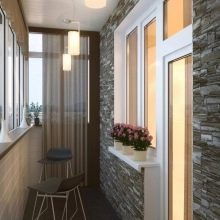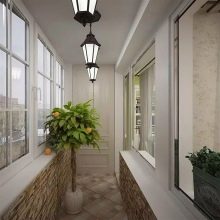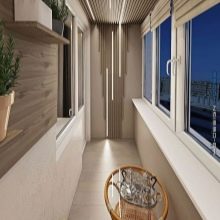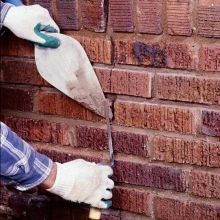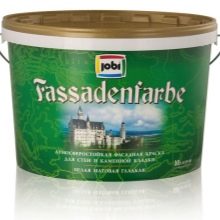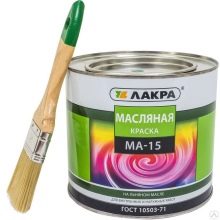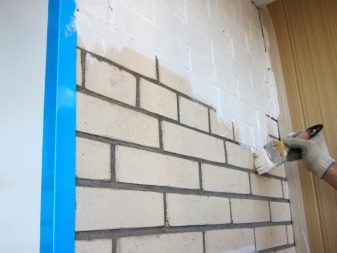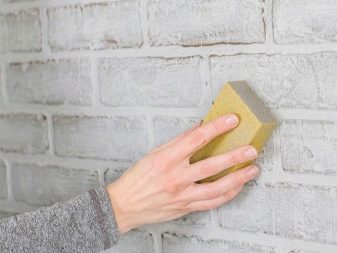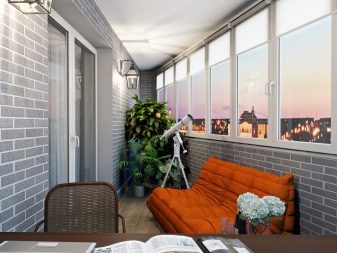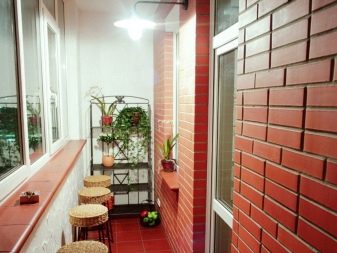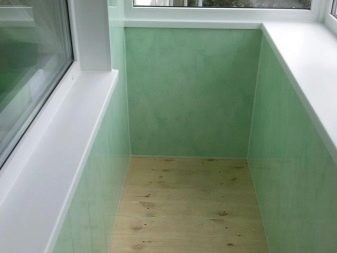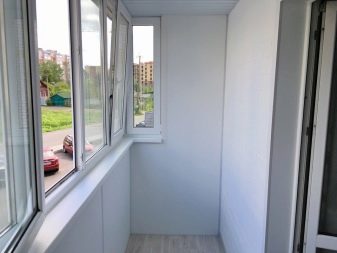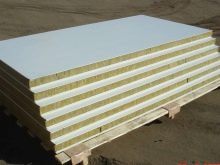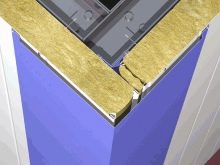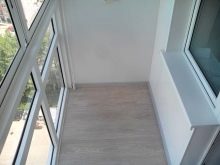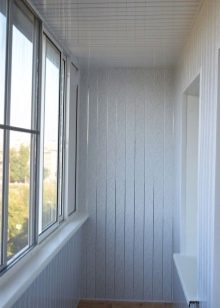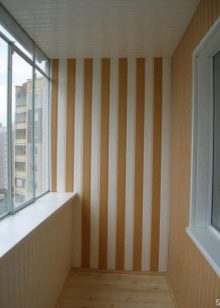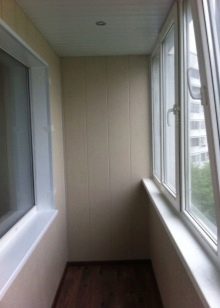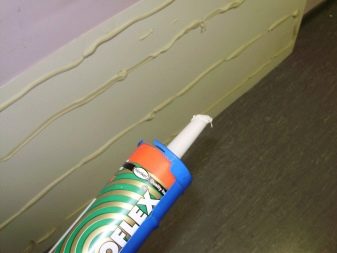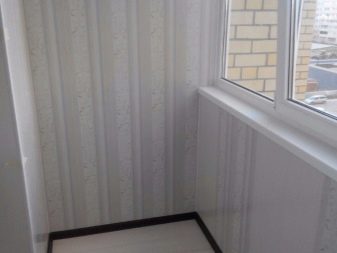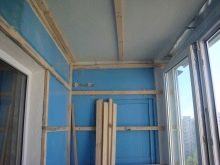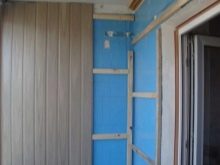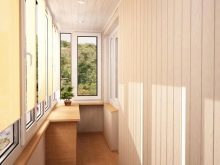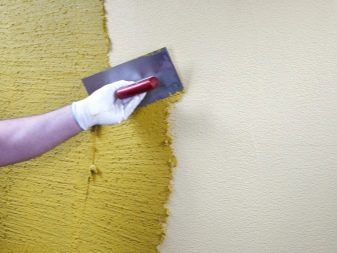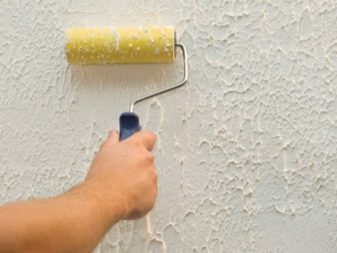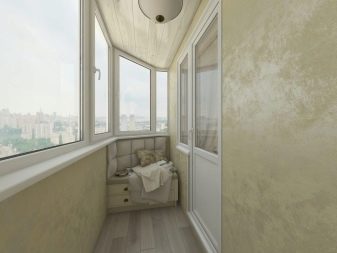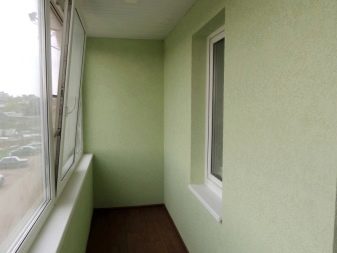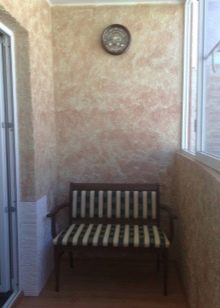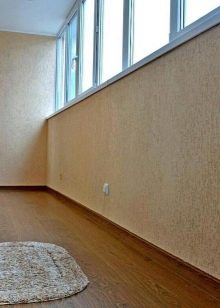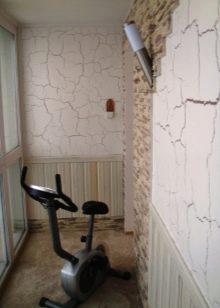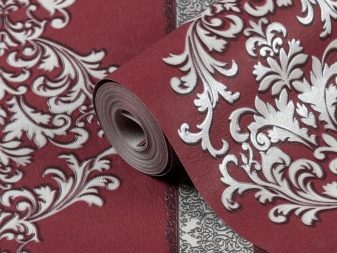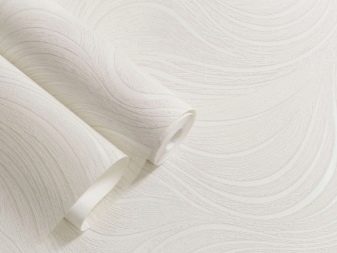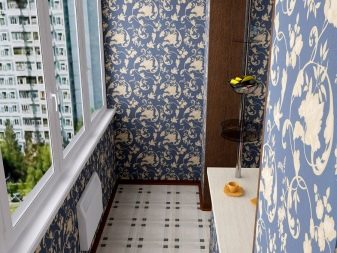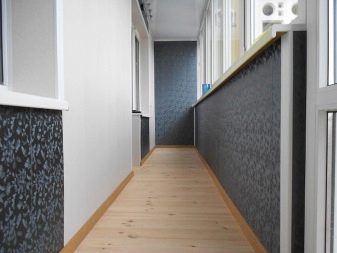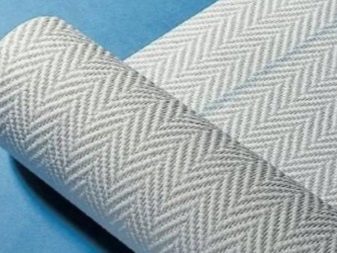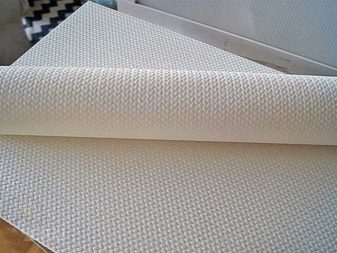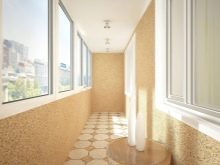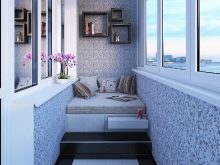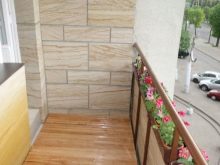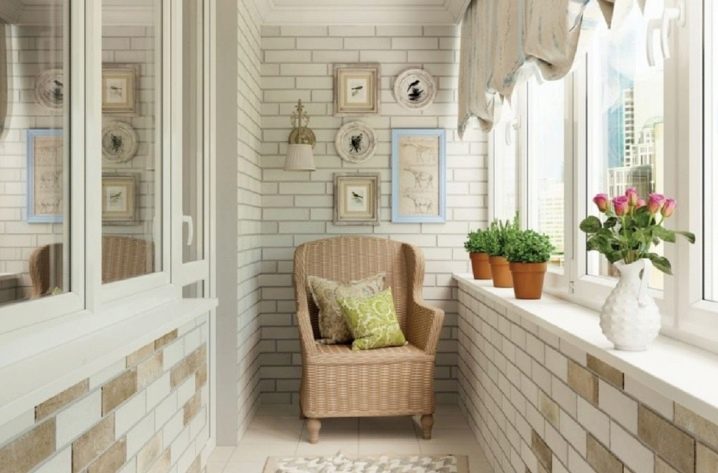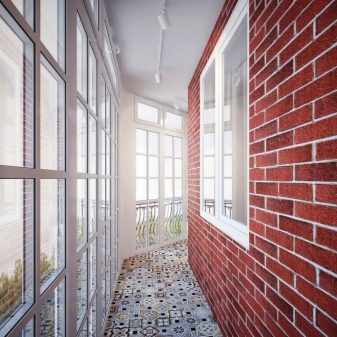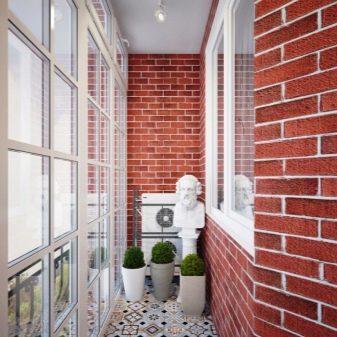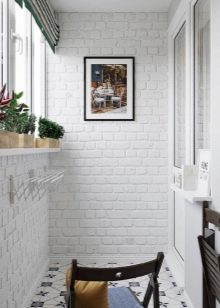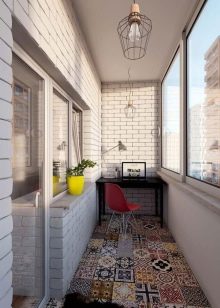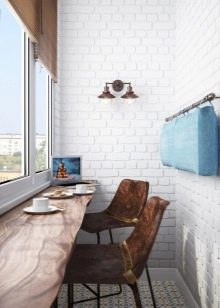Methods for finishing a brick balcony
Despite the fact that a brick balcony looks good on its own, to maintain its attractive appearance for many years, surfaces still require additional finishing. There are several ways to refine the brick walls on the loggia.
Peculiarities
A brick balcony has an aesthetic appearance. However, in order for the walls not to collapse under the influence of temperature jumps or natural phenomena, the material requires additional protection, which the finish provides. Also, the brick is painted or hidden behind the panels, when the loggia needs to be decorated in a certain color or style, corresponding to the general direction of the apartment interior. Open balconies are usually painted or varnished, decorative plaster and ceramic tiles are also suitable for them. Glazed balconies can be decorated in much more diverse ways, but painting remains the most popular solution here.
What style is it suitable for?
Brick walls on the loggia are ideal for minimalism. Having painted the masonry in the appropriate shade and emphasizing its clear lines, all that remains is to add a couple of laconic pieces of furniture and take care of high-quality lighting. A brick wall will look great in such a design direction as a loft. In such a case, it is recommended to artificially age the surface itself, and emphasize the seams by joining. On such a balcony, there must be live plants that stand out effectively against the background of the brick.
Brickwork looks appropriate in a Provence-style space. Its surface can be partially decorated with decorative plaster or wood-like panels.
Natural furniture and textile accessories "continue" the general theme.
Basic finishes
You can refine the brickwork on the balcony with your own hands in one of five ways.
Painting
The easiest way to make a beautiful brick balcony is by ordinary painting. At the stage of preparation, the surface must be cleaned with a metal brush to remove the remnants of the mortar that got on the walls during masonry. Next, the brick is processed with sandpaper: first coarse-grained, and then fine-grained. The existing potholes, irregularities and chips will have to be putty and, after drying, also covered with a concrete-contact compound. At the next stage, the walls are primed in two or three layers, and the composition must correspond to the selected paint. For example, for latex stains, a deep to medium penetration acrylic primer should be used.
You can go directly to painting only after the walls have dried. For actually outdoor premises, experts advise using water-dispersed compositions, which will provide additional protection against mold and mildew. In the absence of glazing, it is better to take facade paints for stone walls. For surfaces inside, both polymer and acrylic, silicate, cement compositions are suitable. By the way, if you paint the balcony with oil paints, then it is better to stick to an exclusively white shade - the rest will begin to fade under the influence of sunlight.
It is more convenient to work with a simple brush, and apply strokes in a horizontal direction. A roller is useful only if you plan to create the effect of a primer brick, and a regular dish sponge will allow you to embody the effect of old masonry.At the end of the process, jointing can be carried out, providing a more harmonious relief of the seams.
Sandwich paneling
It will also be possible to stylishly decorate the loggia using sandwich panels. It is allowed to use this kind of finish for any glazing, and it is also easy to install and operate. Moreover, even walls do not even require an additional step - creating a lathing. Sandwich panels can be painted in any color - just as they can imitate classic masonry.
By the way, it will be possible to sheathe the balcony on your own, following very simple instructions.
The whole process begins with the installation of fittings, that is, corners, baseboards and finishing elements. Further, the lower part of the first panel is inserted into the formed groove, and the edge of its wider part is fixed to the frame. For this purpose, you can use nails, staples, and dowels. Next, the narrow end of the panel is inserted into the groove of the previous element, and then the sequence is repeated for all the remaining parts.
Plastic paneling
Due to its low cost, the decoration of a brick balcony with plastic panels is also popular. Despite the fact that there are a huge number of colors and designs of this material, including stone, many people prefer the usual white details. Installation of plastic panels is not particularly difficult. They are easy to care for and have a long service life. Do not forget that the practical material does not deform due to temperature jumps, it copes with high humidity and is not afraid of constant exposure to the sun's rays. Of course, the advantage of this method of decorating a balcony is its low cost.
Plastic panels are either simply glued to the brick, or fixed on a wooden crate. The first method is recommended for small balconies, since even the most compact frame hides the necessary space. To implement it, the brick surface is leveled to the maximum, and then plastic is glued to it. The disadvantages of this method are the inability to repair individual strips, as well as deterioration of thermal insulation.
In the second case, the cover is attached to a frame made of wood. Before screwing the bars to the surface, they must be impregnated with anti-rotting solutions. Further, slats are fixed on the crate with a pitch of 50 centimeters, everything is covered with insulation, and the plastic panels themselves are fixed on top. The first of them should be installed using a stapler, and the rest should be snapped into place using special locks.
Decorative plaster
Unusual design ideas can be implemented using decorative plaster to decorate the loggia. However, it is allowed to create such a coating only after a certain microclimate has been achieved in the room. Moreover, the temperature and humidity will have to be kept constant at all times. For an unheated balcony, you will have to pick up special facade mixtures, which are available in different colors and textures. The composition is applied using rollers, a mold or a trowel.
Textured mixtures will look original, in which the smallest pieces of marble or granite are added, easily painted in any shade.
It should be added that when applying decorative plaster, an additional layer is formed, which increases thermal insulation and sound insulation. The material is safe for the health of the inhabitants of the apartment and has a very good resistance to mechanical damage. The main disadvantages are dust and dirt, constantly penetrating grooves and cracks.
Pasting walls with wallpaper
Balconies that are sealed with glass and lined with insulation can simply be pasted over with wallpaper - paper, non-woven and vinyl models are suitable. For open blocks, special facade canvases, consisting of polyethylene or non-woven fabric and having greater stability, will turn out to be optimal. In general, non-woven wallpaper for a loggia has several layers. The lower one is made of compressed cellulose, and the upper one is foamed vinyl. They have a long service life, but at the same time they do not allow moisture and steam to pass through, and this, in turn, leads to the appearance of fungus and mold.
You can also use mineral-based fiberglass wallpapers, which include glass, limestone, quartz sand, dolomite and even clay. They are not afraid of temperature jumps and are characterized by elasticity. Three-layer canvases made of flexible stone, that is, stone chips, acrylic resins and fiberglass, are also suitable for the street. Such a durable coating can be additionally varnished.
Brick wall in interior design
To create a bright and cozy seating area on the balcony, it will be enough to paint the brickwork in two colors: white (as the main one) and gray (for several accents). The general color palette is supported by tiles on the floor and accessories: a rug, curtains, decorative pillows on a wicker chair. This solution allows you to make the space integral. Paintings in artificially aged frames, as well as a wall lamp, are fixed on one of the white plain walls.
A small space looks very stylish, the brick walls in which have acquired color and texture due to the coating with decorative plaster. The joints between the bricks are highlighted in white, which, in combination with the window frame, creates a striking contrast to the reddish-brown masonry. Ceramic tiles with geometric patterns lie on the floor with a glazed loggia.
The color scheme of the decorative elements continues the general trend.
In order to expand the small space, the brick walls on the balcony should be painted white, creating a single canvas of the bricks themselves and the space between them. A long table and unusual wooden chairs look great against a snow-white background, as well as ceramic patterned tiles as flooring.
